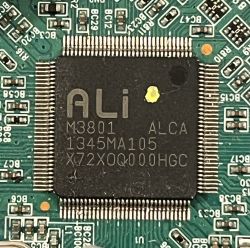FAQ
TL;DR: Lab tests show the €2 “50 W” COB draws 51.6 W at 1.5 A [Elektroda, p.kaczmarek2, post #18937205]; “it heats up very much” [Elektroda, p.kaczmarek2, post #18937694] Proper cooling, not voltage, decides service life.
Why it matters: Overshooting temperature cuts LED life more than 50 %.
Quick Facts
• Forward voltage: 30–36 V DC at 1.5 A [Elektroda, p.kaczmarek2, post #18937205]
• Claimed luminous flux: 4 700 lm (≈ 94 lm/W) [Elektroda, Joker., post #18939454]
• Measured power: 0.25 W–72 W in test range [Elektroda, p.kaczmarek2, post #18937205]
• Safe passive cooling: ≤ 15 W on 52 × 40 mm sink [Elektroda, p.kaczmarek2, post #18937205]
• Typical lifetime in cheap floodlights: 5 475 h before failure [Elektroda, teskot, post #18939759]
Does the €2 COB really output 50 W?
Yes. Supplied with 1.5 A the module reached 34.4 V, delivering 51.6 W—slightly above the rating [Elektroda, p.kaczmarek2, post #18937205]
How bright is it in lumens?
Seller quotes 4 700 lm, equal to ~94 lm/W efficacy [Elektroda, Joker., post #18939454] Independent lux or integrating-sphere data were not posted, so real light may vary ±30 %.
What current and voltage should I use?
Run it from a constant-current driver: 1.5 A nominal, 30–36 V forward range. Start at 500 mA for testing to cut heat by 70 % [Elektroda, p.kaczmarek2, post #18937205]
Why is a large heatsink mandatory?
At 50 W, roughly 43 W becomes heat [Elektroda, Joker., post #18939454] A 52 × 40 mm sink reached unsafe temperature above 500 mA [Elektroda, p.kaczmarek2, post #18937205]
How big should the cooler be?
Field users needed sinks six times larger for fanless operation at full power [Elektroda, Tomek515, post #18937617] A PC CPU cooler plus fan handles 50 W with case temps below 60 °C.
How long do cheap COBs last?
In outdoor floodlights driven near max, units failed after 1.5 years (≈ 5 475 h) [Elektroda, teskot, post #18939759] Some modules died after only “a few hundred hours” even on oversized sinks [Elektroda, zgierzman, post #18937984]
What is CRI and why care?
CRI gauges colour fidelity. These budget chips sit around 60, causing washed-out colours and glare [Elektroda, pawlik118, post #18938359] High-CRI (>90) alternatives improve vision and comfort.
Can I build a handheld flashlight with it?
Possible, but energy and heat constraints bite. Two 18650 cells give ~60 min at 30 W while the head overheats quickly [Elektroda, PPK, post #18940963] Add thermal throttling or derate below 20 W.
Could it replace a projector lamp?
Unlikely. Projectors need 20 000–30 000 lm and near-perfect CRI; the COB lacks both and focusing a 52 mm light patch onto a 5 mm DLP window is impractical [Elektroda, CMS, post #18940663]
How do I drive it safely from mains?
Use an isolated 36 V constant-current supply, not a voltage source. Over-voltage spikes or thermal runaway can destroy the array in seconds [Elektroda, p.kaczmarek2, post #18937205]
Three-step home test for luminous output?
- Mount LED on final heatsink and power at target current.
- Place phone light-meter app or luxmeter 1 m away, perpendicular.
- Record lux; multiply by 12.57 to estimate lumens for a bare emitter pattern.
“Comparative readings beat guessing.” [Elektroda, zgierzman, post #18944038]
How can I extend lifetime?
Derate to 50 % current, drop power to ~25 W, and temperature plunges, letting LEDs survive 20 000 h+ [Elektroda, GanzConrad, post #18938482] “Reducing current by 10 % barely dims output yet doubles life” [Elektroda, speedy9, post #18938201]
What edge-case failures should I expect?
LED dies from single overheated bond wire; cheap silicone thermal paste worsens it. One user lost 2 of 3 modules despite 30 × 50 cm sink and light duty [Elektroda, zgierzman, post #18937984]





